
Delhi10:26 PM | 27th April 2024
In the ever-evolving realm of advertising and filmmaking, where capturing the audience’s attention is akin to a fleeting moment, veteran ad filmmaker Prahlad Kakar talks to Education Post’s Prabhav Anand

Image: Prahlad Kakar
In the ever-evolving field of advertising and filmmaking, where capturing the audience’s attention is akin to a fleeting moment, veteran ad filmmaker Prahlad Kakar talks to Education Post’s Prabhav Anand about the transformative power of storytelling, the significance of the first three seconds in advertising, and the delicate art of integrating iconic celebrities into brand narratives Prahlad Kakar in this EXCLUSIVE exclusive interview.
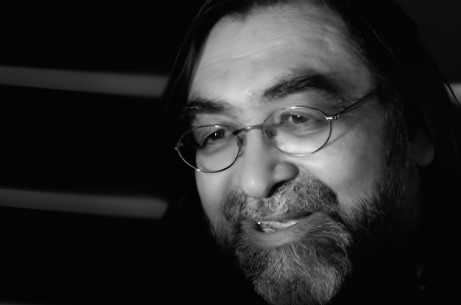

Certainly, my journey in the advertising world has been a remarkable one, marked by unique experiences and challenges that have shaped me into the professional I am today.
To truly understand my journey, it’s important to delve into the historical context and the distinct phases that have defined my career.
Back when I embarked on this journey, the advertising landscape was vastly different from what it is today. It was a time characterized by a more genuine passion for creativity, and the industry was not plagued by the intense competition and high levels of corruption that we witness today
Competition was not as cutthroat as it is now, and corruption was relatively low. In those days, it was all about delivering high-quality content consistently, and under-the-table dealings and connections did not play as significant a role in one’s success.
What set my era apart was the scarcity of producers. The industry had not yet been flooded with professionals vying for projects. Clients valued quality work, and they were eager to collaborate with those who consistently delivered exceptional content.
Contrast this with the present day, where we are inundated with advertisements. Whether you are watching TV, scrolling through social media, or surfing the internet, advertisements are everywhere, often causing annoyance rather than genuine engagement. This shift has led to a noticeable decline in the quality of content.
During my early years, the content on television, especially on Doordarshan, was of a significantly higher caliber. People looked forward to the content, and there was a genuine interest in the ads being aired.
What truly worked in our favor was the timing of our entry into the industry. It was not a calculated move but rather an organic progression. However, some fundamental principles remain the same then and now. The top 5 percent of content creators, often referred to as the “golden circle,” set the industry standards. These individuals achieved their status through relentless hard work, unwavering consistency, and the ability to produce content that stood out.
In stark contrast, the remaining 95 percent of content creators found themselves scrambling for whatever was left. They often had to compete on price because they couldn’t match the quality of the top 5 percent. Many resorted to “jugaad,” a term popular in Delhi that encapsulates the spirit of finding creative solutions with limited resources.
Over time, a significant number of these Delhi-based content creators migrated to Mumbai, the epicenter of the industry. They brought with them the jugaad mentality, which prioritizes cost-effectiveness over quality. Their approach aimed to undercut the competition, securing projects primarily based on price.
For the top five percent, the initial five films of their career held immense significance. These early projects determined their reputation in the industry. Reputation was and still is, the ticket to the exclusive club of creators known for delivering exceptional work consistently.
The first two years in the industry were critical for anyone hoping to make it big. It was a time when individuals had to invest heavily in building their reputation, often foregoing significant financial gain. However, this period laid the foundation for future success. Creators took calculated risks, invested in honing their craft, and, if fortunate, worked with exceptional scripts that allowed them to create remarkable content.
While efficiency and jugaad may work for some, those who focused on quality were the ones who left a lasting impact. Today’s advertising landscape is inundated with predictable and uninspiring ads. To truly stand out, one must be a storyteller, captivating audiences with compelling narratives that transcend the mundane.
A prime example of this approach can be seen in recent campaigns, such as the Google ad that bridged divides and delivered a powerful message that resonated with audiences on a profound level.
My journey in the advertising industry reflects the dynamic evolution of the field over the past four and a half decades. While competition has intensified, and the industry has witnessed significant changes, the core principles of reputation and quality remain unaltered. To make a mark in this industry, one must possess dedication, unwavering commitment, and the willingness to invest in oneself. It’s not just about financial gain; it’s about the quality of the work you produce, which ultimately sets you apart in the eyes of both clients and audiences.

Creating iconic advertising campaigns like the ones you mentioned has always been a thrilling journey for me. The key to conceptualizing and executing relatable scenarios and emotions in these campaigns lies in understanding the essence of the brand and its target audience.
For instance, in the case of Pepsi’s “Right Choice Baby!” ad campaign, the objective was to establish Pepsi as the ultimate choice for the youth. We needed to connect with their rebellious spirit and desire for independence. So, we crafted a narrative that showcased a young individual making the unconventional choice of Pepsi over a traditional drink, challenging societal norms. The relatability came from tapping into the youth’s desire to break free from conventions and make their own choices. This campaign was all about celebrating that moment of rebellion and self-expression.
Similarly, with the “2 Minutes!” Noodle ad campaign for Maggi, the goal was to communicate the idea of a quick and convenient meal. We created scenarios that mirrored the fast-paced lives of our target audience – busy moms and hungry kids. By showcasing relatable situations where Maggi noodles came to the rescue, we struck a chord with our viewers. The emotions of nostalgia, comfort, and ease resonated with them, making it heart-warming.
The “Ting Ting Ti Ting” campaign for Britannia Biscuits was another unique challenge. We needed to convey the joy and delight associated with the brand’s products. So, we turned to music, a universal language of joy. The catchy jingle and vibrant visuals not only made it relatable but also left a lasting impression. It was about creating a sensory experience that connected with the consumers.
In all these campaigns, the key was to understand the pulse of the audience and evoke emotions that they could relate to. It required a deep dive into consumer insights, market trends, and the brand’s identity. The execution involved meticulous planning, creative storytelling, and seamless integration of the brand’s message. It’s essential to strike a balance between being entertaining and conveying the brand’s message effectively.
Moreover, collaboration with a dedicated team of professionals, from writers to cinematographers, played a pivotal role in bringing these concepts to life. Their expertise and commitment were instrumental in ensuring that the relatability factor remained intact throughout the execution.
It’s about telling a story that resonates with the audience on a personal level. When you can create that emotional connection and make the brand a part of their lives, you’ve achieved the essence of successful advertising. So, conceptualizing and executing relatable scenarios and emotions is a blend of art, science, and understanding the soul of the brand and its consumers.

Well, you see, the world of advertising has undergone a seismic shift thanks to computer technology and the mighty influence of social media. These changes have brought forth a plethora of challenges and opportunities, especially for the younger generation entering the industry.
Let’s talk about the bright side first – the opportunities. We’re living in a digital era where social media has become a game-changer for advertisers. It’s like having a direct hotline to your audience. You can precisely target your ads and track how folks are responding to them. Data is the name of the game, allowing us to finetune our messages with surgical precision.
What’s more, the surge of online streaming services has opened up new horizons for content creators. Brands can now team up with influencers and content creators to seamlessly integrate their products into the digital narrative. It feels less like traditional advertising and more like a natural part of the content.
But, as they say, every rose has its thorns. In this case, the digital space is crowded with content, making it a Herculean task to grab a viewer’s attention. People’s attention spans are shorter than ever, and the competition to engage them is cutthroat. Crafting content that not only stands out but also strikes a chord on a personal level is an ongoing battle.
And let’s not forget that technology is advancing at breakneck speed. Staying up-to-date is no longer a choice; it’s a survival skill. The advertising industry has become tech-driven, and professionals must keep up with new tools and platforms. This might be a bit overwhelming for the older generation, but the younger folks have a natural knack for navigating this digital terrain.
So, how do the young guns adapt to these changes? Well, they already speak the language of the digital world fluently. Social media is their playground, and they effortlessly hop from one platform to another. They understand trends and have a knack for creating content that goes viral.
But here’s the catch – they need to blend this digital wizardry with a solid grasp of storytelling and branding. The fundamentals of advertising remain the same; it’s all about weaving a captivating narrative that resonates with your audience. The real challenge lies in seamlessly merging technology with creativity.
To sum it up, the digital landscape has completely transformed advertising, offering unparalleled opportunities while cranking up the competition. The younger generation, with their innate digital prowess, is well-equipped to thrive in this environment. But they should never forget that at the heart of advertising, it’s still about storytelling and forging that human connection with the audience. Finding the right balance between tech and creativity is the key to conquering the ever-evolving realm of advertising.

Storytelling and emotions are the heart and soul of what I do in the world of advertising. They are like the essential ingredients of a recipe, and without them, you don’t really have a story to tell. You see, human beings are inherently emotional creatures. We are drawn to stories that make us feel something, whether it’s joy, sadness, excitement, or even nostalgia. This emotional connection is what sets us apart from machines, from AI. No matter how advanced technology becomes, it will never truly understand or replicate human emotions. That’s a fundamental concept that I hold dear.
So, when it comes to using storytelling and emotions in my advertisements, it’s all about creating that emotional resonance with the audience. Let me give you an example, like the Maggi ads we worked on. In those two minutes of ad time, we aimed to evoke a sense of nostalgia and warmth. We used music as a powerful tool to connect with the viewers on an emotional level. It was all about triggering memories and emotions related to the product, and we did it without relying on digital gimmicks or excessive content. The key was to keep it simple and relatable.
Now, you might wonder, why focus so much on storytelling in today’s fast-paced world? Well, here’s the thing – if you can capture someone’s attention and immerse them in a compelling narrative, you’ve got them hooked. It’s like a good book that you can’t put down. And in the world of advertising, that’s priceless. So, even with the rise of digital marketing, if your storytelling is on point, people will stay engaged.
Let me take you back a bit. Do you remember that iconic cricket match ad? It was a nail-biting finish, and the whole stadium was on the edge of their seats. That’s what storytelling is all about – creating that tension, that commitment. Will they make those last five runs with just one ball left? The suspense was palpable. And then, the girl in the stands, the cricketer’s girlfriend, she looked at the field with bated breath, and when those runs were scored, she danced with joy. It was a story of commitment and victory, and it resonated with everyone.
Now, let’s talk about emotional content. Imagine a young couple, 20 years ago, breaking up in front of their homes. It’s something that doesn’t happen in Indian families, right? Cadbury managed to capture that emotion beautifully, showing how love triumphs. The choice of location, the natural setting, all of it contributed to the emotional impact of the ad. Cadbury made an emotional connection with the audience, and that’s why it’s still remembered fondly.
So, even though we’ve seen a shift towards digital media, the core of effective advertising remains the same – telling a compelling story that touches people’s hearts. The language may change, and we may adapt to new trends, but as long as we can create that emotional bond with our audience, we’ll continue to succeed in the world of advertising. It’s been an incredible journey for me, and I wouldn’t trade it for anything else.
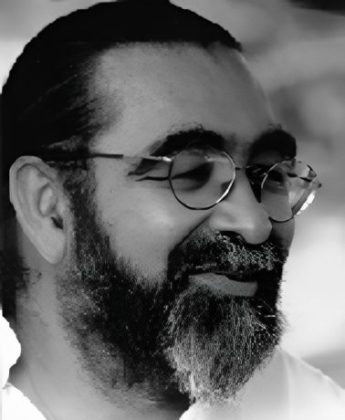

Balancing the demands of talent, clients, and criticism in the world of filmmaking is an intricate dance that requires finesse and strategic thinking. Let me break it down for you.
First and foremost, we need to understand that a brand has a purpose. It’s not just about the product or service it offers; it’s about the values it represents and the narrative it conveys. If a brand has both positive and negative aspects, it’s the client’s role to decide how to highlight the positives. They may come to me and say, “Prahlad, you’re the filmmaker, you know how to tell a compelling story. Show our brand in the best light possible.” And here’s where the collaborative process begins.
However, it’s important to note that I may have a strong vision for how the film should be crafted. This vision stems from my understanding of storytelling and how emotions can be translated onto the screen. It’s not just about creating a visually appealing advertisement; it’s about making the audience feel something, connecting with them on an emotional level.
But there’s a delicate balance to maintain. Pushing too hard or clashing with the client’s ego can lead to strained relationships and missed opportunities. Sometimes, compromising on certain creative aspects may be necessary to keep the collaboration fruitful. It’s a matter of knowing when to stand firm and when to yield.
Now, let’s shift the focus to ethical responsibilities, especially when dealing with sensitive and controversial topics. Filmmakers, like any other professionals, have a responsibility to handle such subjects with care and sensitivity. However, this responsibility is shared with the client and the team involved in the project.
The filmmaker’s role is to bring a vision to life, but they are not the sole decision-makers. It’s a collaborative effort, and the client plays a significant role in executing the project responsibly. If a topic is controversial, it’s crucial for both the filmmaker and the client to be aware of the potential implications and consequences.
Ultimately, it’s the client who decides whether to proceed with a project or not. The filmmaker can offer suggestions and guidance, but the final decision lies with the client. In such cases, open communication and a shared understanding of ethical responsibilities are key.
In today’s fast-paced digital world, grabbing the audience’s attention has become increasingly challenging. You mentioned the importance of condensing a story into a few seconds to engage viewers effectively. Indeed, in the past, we aimed to engage viewers within 30 seconds, but now, with the rise of social media and digital platforms, the attention span has shrunk to a mere 3-6 seconds.
This shift in consumer behavior means that filmmakers and advertisers must adapt their storytelling techniques. Every second counts and the opening moments of a video must be attention-grabbing. It’s a race to capture the viewer’s interest before they scroll past or skip the content.
Basically, balancing the demands of talent, clients, and criticism is a nuanced process in filmmaking. It requires effective communication, compromise, and a shared commitment to creating impactful stories. Additionally, ethical responsibilities in handling sensitive topics should always be at the forefront of a filmmaker’s mind. In today’s digital landscape, the battle for attention is fierce, demanding creative and concise storytelling from content creators.

Absolutely, you’ve touched on some critical aspects of the advertising world today. Let’s delve into it a bit deeper. The belief that the first three seconds of an advertisement are pivotal is grounded in the ever-evolving nature of advertising. In the past, the world of advertising was different, simpler, and perhaps a tad slower. But now, things are changing at lightning speed. We go to bed with one reality, and when we wake up, it’s already transformed.
One of the key factors in this rapid transformation is the relentless growth of artificial intelligence (AI). AI is making strides, and in some cases, it’s even creating advertisements independently. This brings us to a fundamental question: do we want to embrace the efficiency of AI, or do we value the human touch in our storytelling? It’s a choice, really. Some may opt for the efficiency, but others, like myself, believe that human emotions are irreplaceable
Now, let’s talk about adapting to these changing trends and technologies. My journey as an ad-film maker has seen its fair share of turning points. One of the most significant moments was when I realized that I didn’t need to become a tech guru myself. Instead, I could surround myself with talented individuals who were well-versed in technology. They were the ones who could harness its power to execute our creative visions effectively.
You see, the magic happens when you bring together creativity and technology seamlessly. It’s not about mastering every aspect of technology; it’s about knowing how to leverage it. As an ad-film maker, my role is to guide, to envision, and to inspire. I don’t need to become a tech expert; I need to collaborate with experts who can bring my ideas to life.
Now, let’s address the question of working with celebrities in advertising. It’s true; I’ve had the privilege of collaborating with some remarkable individuals like Sachin Tendulkar, Sushmita Sen, and Anand Ahuja. But here’s the twist – in my view, the brand is the real hero. Celebrities are a part of the narrative, but they aren’t the central focus. The brand itself needs to shine.
Think of it this way: if the brand isn’t strong enough to stand on its own, then no celebrity endorsement can save it. The real challenge lies in infusing emotion into the brand itself. It’s about creating a brand personality that resonates with people on a deeper level. This is where the magic happens. The brand becomes the hero, and the celebrities become supporting characters in the story we’re telling.
So, in essence, it’s not about how big a celebrity you can get for your ad; it’s about how effectively you can make your brand the hero of the story. It’s about evoking emotions and creating a connection that lingers in the minds of your audience. It’s about making your brand unforgettable.
In a world where technology and trends are in a constant state of flux, the power of storytelling and emotional connection remains unwavering. It’s the timeless essence of advertising that keeps us engaged, inspired, and connected to brands. So, while we embrace the advancements in AI and technology, let’s never forget the heart and soul of advertising – the power to touch hearts and tell stories that endure.

Absolutely, it’s crucial to understand that, for me, the brand always takes precedence over anything else. The brand message is the heart and soul of any advertisement, and my approach has consistently revolved around ensuring its strength and memorability.
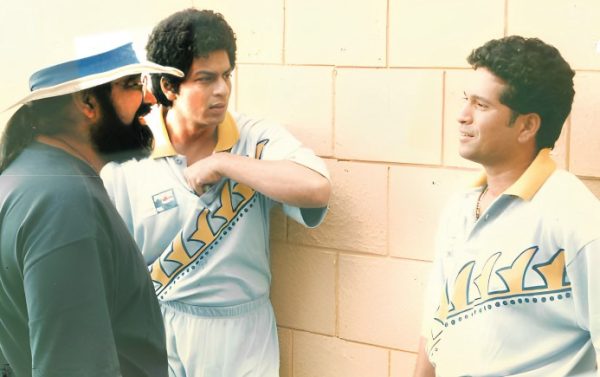
When we have the opportunity to work with celebrities of such stature, it’s an incredible asset. However, it’s vital to remember that these celebrities are a means to convey the brand message effectively, not the end themselves. They become an integral part of the storytelling process.
The first step in integrating a celebrity into an advertisement is to identify a natural synergy between the brand and the individual. The celebrity should embody the values, ethos, and personality of the brand seamlessly. This alignment ensures that the collaboration feels authentic and resonates with the audience.
Once we’ve established this alignment, the next step is to craft a narrative that highlights both the celebrity and the brand without overshadowing one another. The brand message should remain at the forefront, guiding the entire creative process. The celebrity’s presence should enhance the message, making it more relatable and impactful
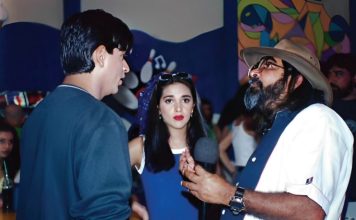
At every stage of production, we emphasize the importance of maintaining a delicate balance between the celebrity’s star power and the brand’s essence. It’s about creating a symbiotic relationship where both elements complement each other, elevating the overall impact of the advertisement.
Moreover, effective communication with the celebrity is paramount. They need to fully grasp the brand’s values and messaging to authentically convey it to the audience. It’s not just about featuring a famous face; it’s about ensuring that their involvement enhances the brand’s story.
In the end, it all comes down to storytelling. We use the celebrity as a character in our narrative, making them relatable to the audience within the context of the brand’s message. The goal is for viewers to connect with the story on a personal level and remember the brand associated with that emotional connection.
While celebrities undoubtedly bring a significant appeal and draw attention, the true success of the collaboration lies in the lasting impression the brand message leaves on the audience. When people think of the advertisement, they should think of the brand first and foremost.
My approach to integrating celebrities into advertisements has always been rooted in prioritizing the brand’s strength and memorability. Celebrities are a valuable tool to enhance the storytelling process, but the brand message remains the ultimate focus. It’s about striking a harmonious balance that leaves a lasting impact on the audience, associating the brand with the emotional connection forged through the narrative.

The advertising industry has witnessed remarkable transformations, and I can certainly recall a pivotal moment in my career when I had to swiftly adapt to evolving trends and technologies, profoundly influencing my approach to storytelling.
One of the most transformative shifts occurred with the advent of digital media and the changing viewing habits of the audience. It was a turning point that demanded a fundamental reevaluation of how we engaged with our viewers. I vividly remember a time when a 30-second television commercial was the standard format, and we could craft elaborate narratives within that timeframe. However, as the digital era unfolded, attention spans dwindled, and audiences began to consume content across various devices, particularly mobile phones.
This shift necessitated a dramatic change in our storytelling approach. We had to condense our narratives into mere seconds, often 3 to 6, to effectively capture viewers’ fleeting attention. It was a challenging transition, but it presented an exciting opportunity to innovate and experiment with concise, impactful storytelling. The power of brevity became paramount, where every second counted, and the opening moments of a video became the make-or-break point.
In response, we harnessed the emotional resonance of storytelling. We tapped into the universal themes and emotions that could be conveyed swiftly. I often found inspiration in classic storytelling techniques, emphasizing relatable characters, conflict, and resolution, even in the shortest of ads. The aim was to create a lasting impact in a brief moment.
Moreover, collaborating with celebrities like Sachin Tendulkar and Shah Rukh Khan became a strategic choice. Their instant recognition, emotional connection with the audience, and ability to enhance storytelling made them invaluable assets in this evolving landscape.
Adapting to the changing trends and technologies in the advertising industry was an imperative shift in my career. It forced me to embrace brevity, focus on emotional resonance, and leverage the star power of celebrities to craft impactful stories in a rapidly evolving digital world. This turning point redefined my approach to storytelling and reinforced the notion that, in the digital age, every second of a story must captivate, connect, and inspire.

Well, my work isn’t just a fleeting moment; it’s more like a catalyst for change. You see, when people look back 20 years from now, they won’t remember every job I did. Instead, there might be a couple of films or maybe just a few memorable lines that stand out. It’s funny how life works sometimes. So, taking credit for a particular line isn’t entirely accurate. What truly matters is the emotion captured within the frame, and the impact the visuals and storytelling have on the audience.
But there’s another side to this story, and it’s about the unpredictability of entrepreneurship. When things go away, it’s easy to blame the director. Yet, when everything turns out brilliantly, the director deserves credit too. It’s not just about greatness; it’s about teamwork. You see, our industry is a symphony of diverse talents working together. If even one element fails, the entire project can crumble. The director becomes the focal point, responsible for managing this intricate dance of creativity.
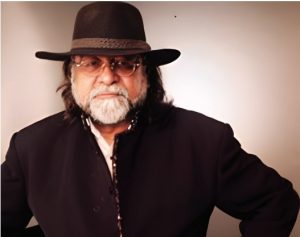
Now, let’s get back to those lines in the ads. Writing those lines isn’t solely the director’s task; it’s a collective effort. Everyone plays a role. It’s like a beautiful mosaic, with each piece contributing to the final picture. So, taking credit for a line is a bit like taking credit for a brushstroke in a masterpiece – it’s the whole painting that matters.
And now, speaking of my legacy, it’s not just about the films I’ve made; it’s about the directors I’ve nurtured and mentored. Over the past fifteen years, I’ve had the privilege of training more than 350 directors. They are my true legacy because they continue to create exceptional work, and collectively, they now oversee 60 percent of the industry. It may seem accidental, but if you ask anyone who has risen in this field, they will tell you how I asked them, “Where did you come from?” If they confidently attribute their success to my guidance, that’s my legacy right there.
You see, it’s not about what I want to be remembered for; it’s about how I’ve empowered others to succeed. The knowledge, passion, and love I’ve shared for cinema with aspiring filmmakers have made a lasting impact. My legacy will endure for the next hundred years, not just because I taught them about filmmaking but also because I instilled in them the importance of sharing knowledge and nurturing the next generation.
So, when people ask what I’d like to be remembered for, the answer is clear – I want to be remembered as the man who taught others how to teach and inspire. My legacy is not about individual achievements but the collective success of those I’ve influenced and mentored over the years.
Copyright© educationpost.in 2024 All Rights Reserved.
